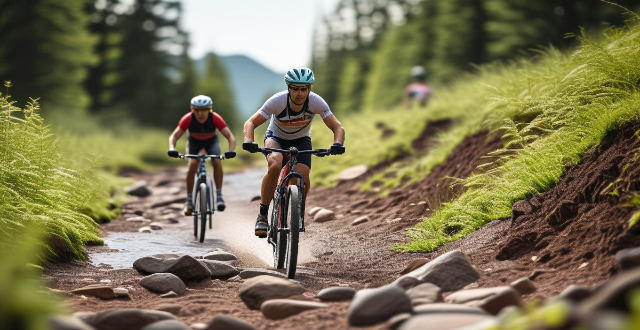Safety precautions for extreme sports include proper gear, physical training, environmental awareness, guidance, emergency preparedness, respect for limits, regulation compliance, hydration and nutrition, rest and recovery, and mental preparation. These measures help minimize risks and ensure a safe and enjoyable experience.

Safety Precautions for Extreme Sports
Participating in extreme sports can be a thrilling experience, but it's important to take necessary safety precautions to minimize the risk of injury or worse. Here are some key safety measures to keep in mind:
1. Proper Gear and Equipment
- Helmets: Always wear a helmet that is specifically designed for your sport. It should fit snugly and be certified by the appropriate safety standards.
- Protective Clothing: Wear clothing that provides protection without restricting movement. This includes items like padded shorts, knee and elbow guards, and impact-resistant jackets.
- Footwear: Choose footwear that offers good grip, support, and protection for your specific activity.
2. Physical Fitness and Training
- Conditioning: Ensure you are physically fit enough for the demands of the sport. This may involve strength, endurance, and flexibility training.
- Skill Development: Learn the proper techniques and skills required for your sport through professional instruction and practice.
3. Environmental Awareness
- Weather Conditions: Be aware of weather forecasts and avoid participating in extreme conditions such as high winds, lightning, or severe temperatures.
- Terrain Familiarity: Know the terrain you'll be navigating and understand its potential hazards.
4. Guidance and Supervision
- Instructor Oversight: Especially for beginners, having an experienced instructor can provide guidance and immediate help in case of accidents.
- Buddy System: Never participate alone; always have a partner who can seek help in case of an emergency.
5. Emergency Preparedness
- First Aid Kit: Carry a first aid kit that includes essentials like bandages, antiseptic wipes, and any personal medications.
- Communication Devices: Bring a fully charged mobile phone or a two-way radio to call for help if needed.
- Know Exit Strategies: Have a clear plan on how to exit the area safely in case of an emergency.
6. Respect for Limits
- Know Your Limits: Recognize your abilities and do not push beyond them just to impress others or yourself.
- Progress Gradually: Build up slowly to more challenging activities instead of attempting advanced maneuvers without sufficient practice.
7. Regulation Compliance
- Legal Requirements: Ensure that you comply with all local laws and regulations regarding the sport.
- Venue Rules: Follow the rules and guidelines set by the venue where you are participating.
8. Hydration and Nutrition
- Stay Hydrated: Drink plenty of water before, during, and after your activity to replace fluids lost through sweat.
- Eat Right: Consume a meal that provides enough energy for your activity but is not too heavy to cause discomfort.
9. Rest and Recovery
- Adequate Rest: Ensure you get enough rest before engaging in strenuous activities to avoid fatigue-related incidents.
- Recovery Time: Allow your body time to recover after intense sessions to prevent injuries from overuse.
10. Mental Preparation
- Mindset: Approach the sport with a clear and focused mindset, free from distractions or emotional turbulence that could impair judgment.
- Stress Management: Practice stress management techniques to maintain calmness under pressure, which is crucial in extreme situations.
By following these safety precautions, you can enjoy the adrenaline rush of extreme sports while significantly reducing the risks involved. Always remember that safety should be the top priority, even above the pursuit of thrills.